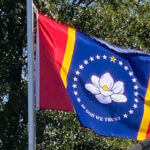Gipson applauds USDA approval of EFRP assistance
Emergency Forest Restoration Program assistance available for all state counties
Mississippi Commissioner of Agriculture and Commerce Andy Gipson applauds the United States Department of Agriculture (USDA) Farm Service Agency (FSA) for approving all 82 Mississippi counties for the Emergency Forest Restoration Program (EFRP) to address extensive private lands forest losses and damage due to severe drought and related insect infestation. The EFRP application period runs from April 15, 2024, to August 15, 2024.
“I want to thank our Congressional Delegation for their efforts in requesting assistance for Mississippi’s tree farmers and forest landowners who were terribly impacted by the historic drought of 2023,” said Commissioner Gipson. “The Emergency Forest Restoration Program will provide much needed relief to begin restoring Mississippi forests damaged by the drought and, subsequently, the southern pine beetles. I highly encourage all affected landowners to contact their local USDA Farm Service Agency office for assistance.”
According to USDA, the Emergency Forest Restoration Program is a cost-share program that provides financial and technical assistance to owners of nonindustrial private forestland (NIPF) to restore NIPF damaged by a qualifying natural disaster event. After applications are received, local FSA county committees determine land eligibility using on-site damage inspections that assess the type and extent of damage and approve applications.
The following requirements for participation in EFRP include:
- Restoration must be completed to meet the Natural Resources Conservation Service and/or state forestry agency technical standards.
- Participants must document and keep records of all costs incurred, including costs associated with personal labor, to complete the restoration activities.
- The minimum qualifying cost of restoration is $1,000.
- The program’s payment limitation is $500,000.
Financial assistance is not provided upfront but is reimbursed, at no more than 75% of the lesser of the actual costs incurred or allowable cost, after a restoration activity is complete. If an EFRP application is approved, the participant is expected to perform restoration and conservation practices based on the FSA-848A Cost-Share Agreement and restoration plan provided.
“I want to personally thank USDA for approving this program. Mississippians are resilient people, but assistance like this is much needed and much appreciated for our rural areas and agriculture communities that have been negatively impacted by recent droughts and insect infestations,” continued Commissioner Gipson. “I encourage all our affected Mississippi landowners who qualify for this program, to apply for assistance now.”
In order to meet eligibility requirements, NIPF land must have existing tree cover or had tree cover immediately before the natural disaster occurred and be sustainable for growing trees. The land must also be owned or leased by any nonindustrial private individual, group, association, corporation, or other private legal entity that has definitive decision-making authority over the land. The natural disaster event must have resulted in damage that, if untreated, would impair or endanger the natural resources on the land and/or materially affect future use of the land.
In addition, landowners experiencing drought related losses, including pine decline, of eligible trees planted on Conservation Reserve Program (CRP) acres may be eligible for up to 50% cost-share, not to exceed the Mississippi state average cost, to rehabilitate and replant the trees. CRP program participants should contact the Mississippi Forestry Commission to request a site visit to assess losses and determine next steps.
Also, eligible orchardists and nursery tree growers may be eligible for cost-share assistance through the Tree Assistance Program (TAP) to replant or rehabilitate eligible trees, bushes or vines. TAP complements the Noninsured Crop Disaster Assistance Program or crop insurance coverage, which covers the crop but not the plants or trees in all cases. For TAP, a program application must be filed within 90 days of the disaster event or the date when the loss of the trees, bushes or vines is apparent.
To apply for the Emergency Forest Restoration Program, visit www.fsa.usda.gov/programs-and-services/disaster-assistance-program/emergency-forest-restoration/index. For more information about USDA’s disaster assistance options, including USDA resources specifically for producers impacted by drought, visit farmers.gov.






